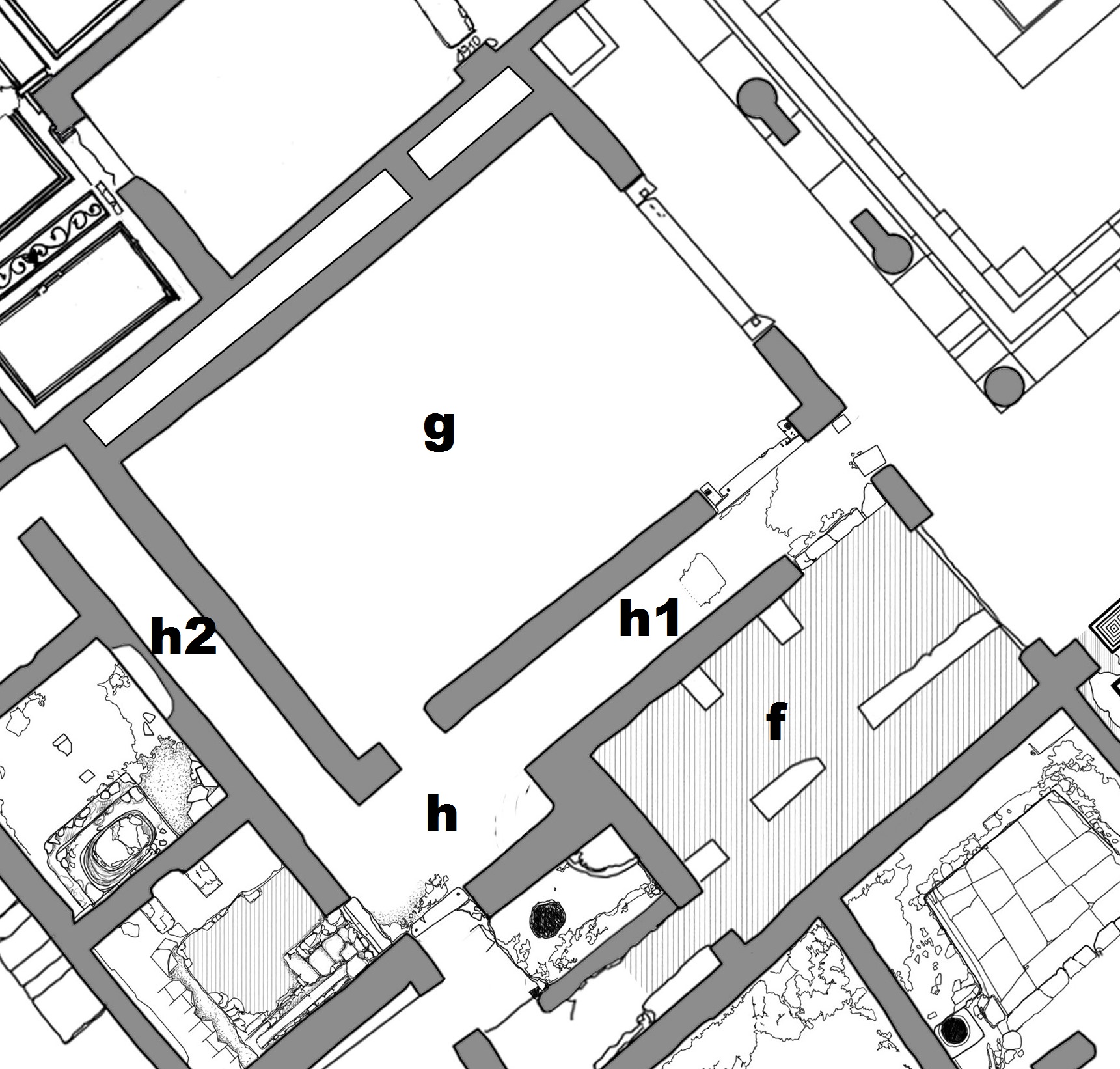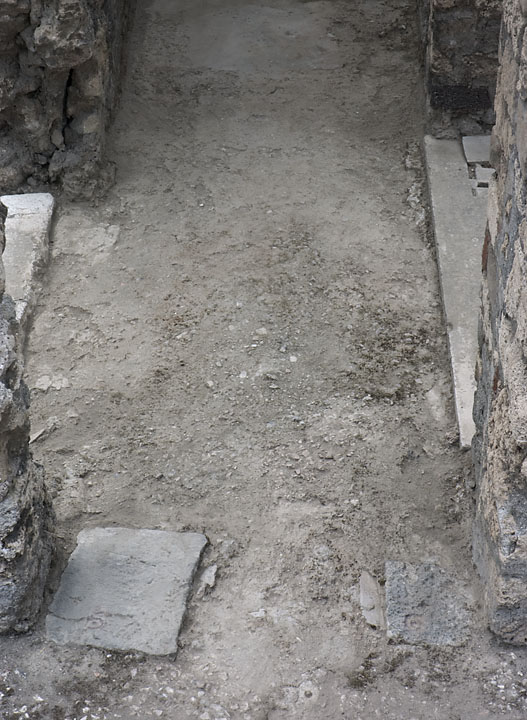Room h1
Description
Thomas Staub
Corridor h1 connects the peristyle with the working area in the north-western parts of the house and the small bathing suite nearby. Just as the other rooms in this part of the house the corridor is part of the enlargement of the Casa del Torello in iulian-claudian times. The corridor seems to have been divided into two parts: the first one is the easternmost part (approx. 3.2 m long), visible from the peristyle, with its two wide doorways opening up towards the south and north into the prestigious rooms f and g. It obviously formed a more “noble' part of the corridor with the same cocciopesto pavement as in the peristyle. The western part is more directly related to the economic quarters and the smaller serving entrance towards cenatiog. Here the floor shows a simple greyish lime cement paving. Remains of a stuccoed, simple epistyle at a height of approx. 4 m indicate that the corridor must have been at least partly decorated. At 4.2 m a row of beam holes is visible in the best preserved western parts of the northern wall, indicating that it was a very high corridor.
The door frames towards the peristyle are constructed of smaller Sarno stone blocks (max. 0.4 m x 0.4 m), whereas the frames of the doors in the rear part, towards the rear entrance of room g and towards rooms i, l and corridor h², are made of tuffeli and small Sarno stone blocks with an average dimension of 0.15 m x 0.1 m. The same material is generally used for the door frames in this part of the house, as well as in the western and northern part of the smaller entity V 1,3. The walls are once more built of a mixed incertum in a yellowish mortar.
The north-western section of the house was in its last stage reached only by corridor h1, leading from the peristyle towards the west, and the distributor room h, while earlier it was also reached from the south by means of Domus V 1,3.
This area of the house was part of the absolute first excavations carried out in Pompeii during April 1748 (Fiorelli 1875, p.419 and plans by La Vega 1810 and Giosué Russo 1817), soon thereafter reburied and re-excavated probably sometimes between 1876 and 1878, not documented.
Dimensions: 7.30 - 7.35 m x 1.10 - 1.25 m = 8.63 m²


